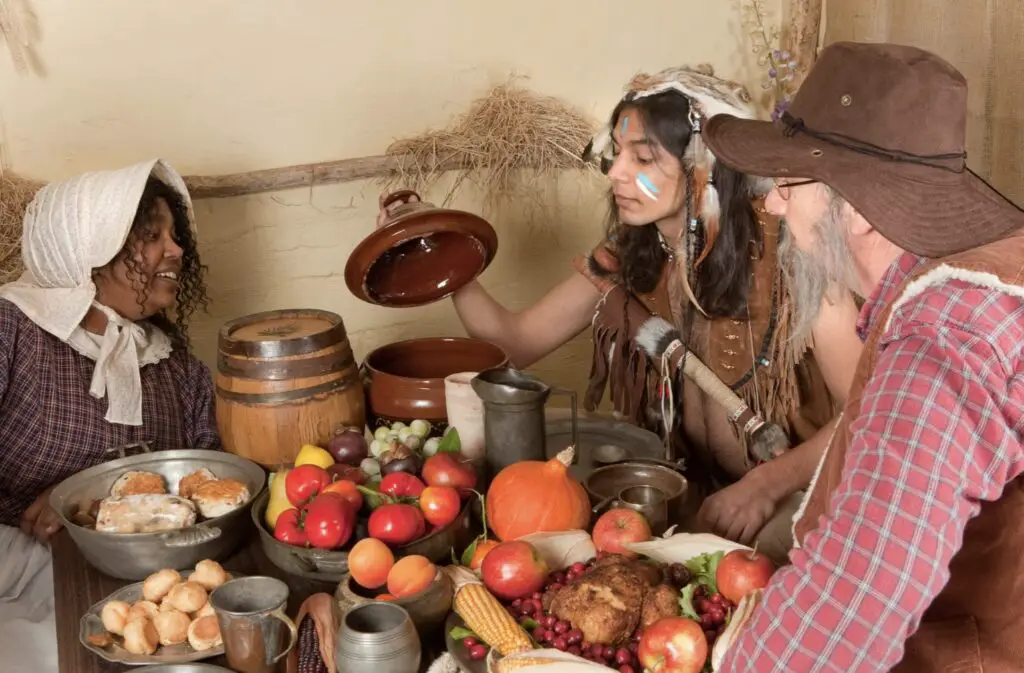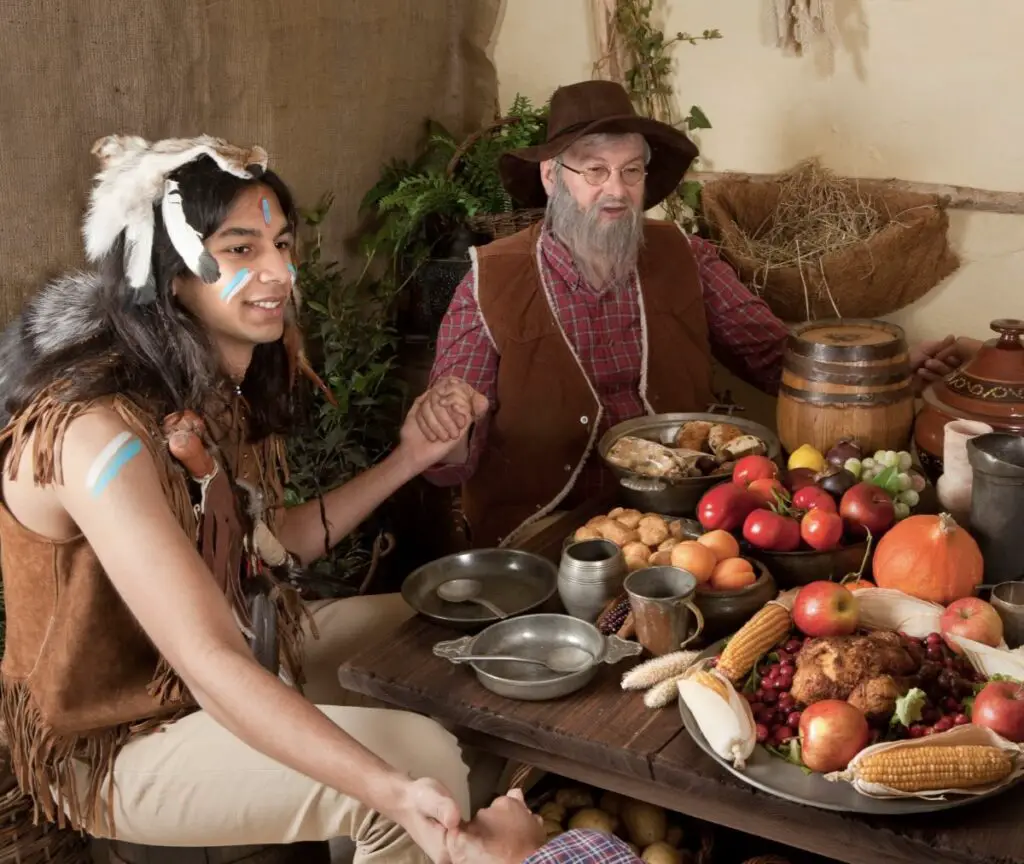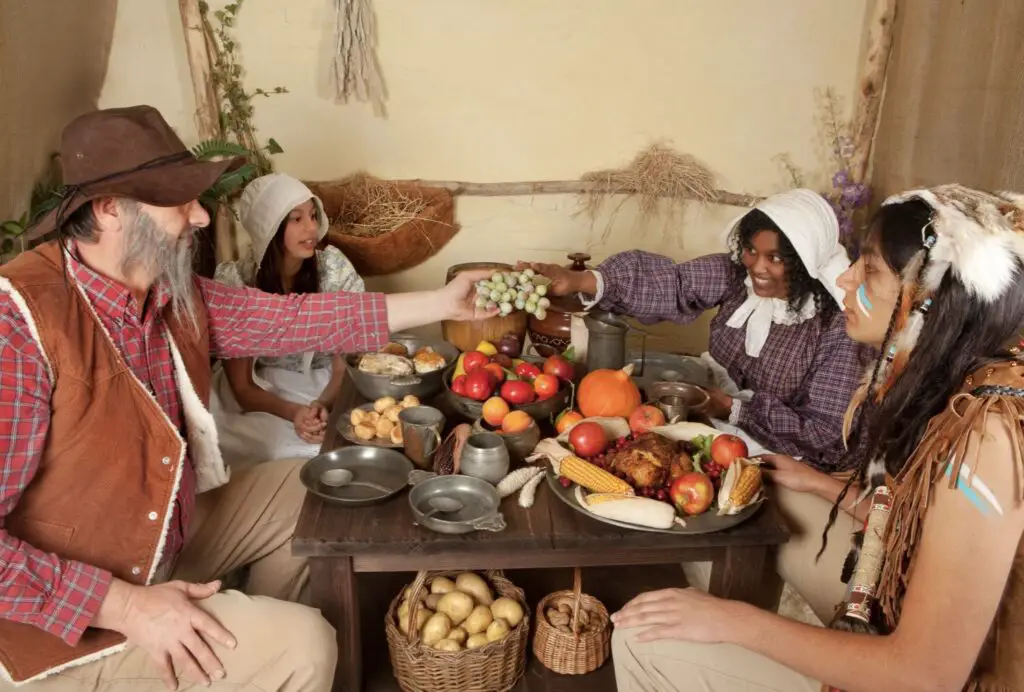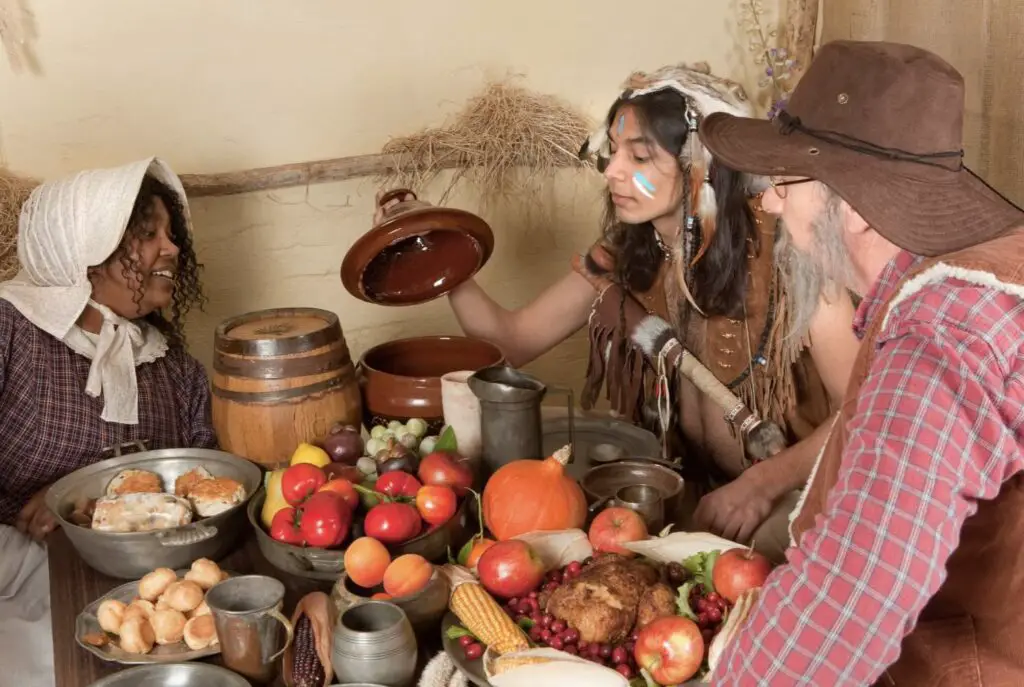The Wampanoag people, whose name poignantly means “People of the First Light,” have illuminated the landscape of the Northeastern United States with a cultural vibrancy that pervades both the past and present. With a lineage tracing back over 12,000 years in regions comprising Massachusetts and Rhode Island, they hold a pivotal place in American history.
This narrative begins by unwrapping the tapestry of Wampanoag history, a story interwoven with the threads of survival, encounter, and integration. From the shores that greeted the Mayflower to the complex social structures that underpin Wampanoag society, we embark on an explorative journey into the heart of an enduring legacy.
Table of Contents
- History of the Wampanoag People
- Wampanoag Culture and Traditions
- The Wampanoag Today
- The Resilient Spirit of the Wampanoag: Thriving in Modern Society
- Economic Endeavors and Entrepreneurship
- Advocacy and Environmental Stewardship
- Political Activism and Sovereignty
- Cultural Renaissance and Public Education
- Healthcare and Community Wellness
- Adapting to Technology While Honoring Traditions
- The Wampanoag and Thanksgiving Myth
- Preserving Wampanoag Language and Knowledge
- Related Questions
History of the Wampanoag People
Embarking on a journey into the past, one can’t help but be drawn to the story of the Wampanoag people, a narrative deeply woven into the fabric of early American history. The Wampanoag, whose name means “People of the Dawn,” have lived in what is now southeastern Massachusetts and eastern Rhode Island for more than 12,000 years. Their presence and impact on history are as significant as the sunrise on a clear morning.
Understanding the Wampanoag Way of Life
Before diving into their historical significance, it’s crucial to grasp the Wampanoag way of life. The Wampanoag were a horticultural people, deftly balancing farming with fishing and hunting, ensuring a well-rounded diet and stable community life. Their society was a tapestry of intricate social ties, with sachems (leaders) presiding over various bands and villages. Their annual calendar included celebrations like the Strawberry Thanksgiving, a time of gratitude and social connection.
Encounters That Shaped History: The Pilgrims and the First Thanksgiving
The Wampanoag are best known for their role in what many recall around autumn tables each year as the story of the First Thanksgiving. In 1620, the Mayflower brought the Pilgrims to Wampanoag land. This moment marked the beginning of a relationship that would forever alter the trajectory of the indigenous inhabitants and the new settlers. Aided by the English-speaking Patuxet Wampanoag Tisquantum (commonly known as Squanto), the Pilgrims learned essential survival skills.
This alliance culminated in the harvest celebration in 1621, during which the Wampanoag and Pilgrims shared a meal. However, this event represented more than just a feast; it symbolized a brief interlude of peace and symbiotic cooperation in the face of monumental changes yet to come.
Impact and Resistance: King Philip’s War
Understanding the Wampanoag narrative moves well beyond the brief tranquility of the first Pilgrim-Wampanoag encounter. By the mid-1600s, the pressures on Wampanoag land and resources intensified with expanding European settlement. A tipping point came with King Philip’s War (1675-1676), initiated by Metacom (also known as “King Philip”), a Wampanoag leader. This conflict was one of the most significant and devastating wars between the settlers and Native Americans, substantially reducing the Wampanoag population and altering their land holdings and way of life forever.
Preservation of Culture and Continuation of Legacy
Despite centuries of hardship, from the ravages of war to the challenges posed by colonization, the Wampanoag persist, embodying resilience and the unyielding spirit of a people deeply connected to their land and traditions. Today, the Wampanoag continue to celebrate their heritage, pass down their language – once on the brink of extinction – and teach their history, ensuring that the threads of their cultural tapestry remain vibrant for future generations.
The Wampanoag’s historical significance is not just a segment in a textbook but a living, breathing legacy that continues to inform and influence the present-day understanding of America’s complex past. Their enduring presence reminds the world of the rich cultural landscape that predated European arrival and the transformative power of mutual respect and cultural exchange.

Wampanoag Culture and Traditions
Delving into the Heart of Wampanoag Traditions and Cultural Practices
Embarking on a journey through time, where ancient echoes still resonate in the modern era, let’s explore the treasured traditions and cultural practices of the Wampanoag people. Their culture is a tapestry woven from the rich threads of history, spirituality, and a deep connection to the land, which continues to shape their identity today.
Communal Celebrations and Social Gatherings
At the heart of Wampanoag culture lies an inherent sense of community, showcased through their gatherings and celebrations. The Green Corn Festival, a prominent event, ushers in the harvest season. It’s a time for giving thanks, renewing social ties, and spiritual cleansing. Participants engage in song, dance, and feasting, all integral to fostering unity and cultural continuity.
Spirituality and Rituals
The Wampanoag people maintain a profound spiritual bond with the Creator and all of Creation, symbolized through various ceremonies. One of the most significant rituals is the Wampanoag New Year, which is marked by welcoming the first spring thunder. This event, rich in ceremonial observances, sets in motion the planting season and rejuvenates the community’s spiritual commitments.
Craftsmanship and Artistry
Artistry runs deep within the Wampanoag culture, manifesting in the intricate craft of wampum making. Wampum, comprised of purple and white shell beads, is not merely ornamental but holds historical significance as it was once used for trade, storytelling, and recording important treaties. Today, Wampanoag artisans preserve this venerable craft, creating wampum jewelry and belts that tell stories and celebrate their rich heritage.
Fishing and Whaling Traditions
The Wampanoag, whose name means “People of the First Light,” has a timeless connection with the ocean. Expert fishing techniques have been passed down through generations, with the ocean as a sustenance and spiritual reflection source. Whaling, in particular, was more than an economic activity; it was a communal effort encompassing respect for the marine life that provided for the people.
Agricultural Practices
Farming is a cornerstone of Wampanoag culture, exemplified by the “Three Sisters” planting method. This ancient agricultural practice involves growing corn, beans, and squash together. This synergistic trio supports one another—corn offers a structure for the beans to climb, beans provide nitrogen for the soil, and squash shades the ground, reducing weed growth and retaining soil moisture. Such practices display a sophisticated understanding of ecological harmony and sustainability.
Preservation of Language and Storytelling
The Wampanoag oral tradition preserves and passes down knowledge. Storytelling is not merely a pastime but a means to instill moral values and maintain an understanding of their cultural history. In recent years, there has been a formidable effort to revive the Wôpanâak language, rekindling a vital aspect of their cultural identity and fostering unity among the tribes.
Education and Cultural Exchange
Recognizing the transformative power of education, the Wampanoag have initiated cultural exchange programs to educate others about their traditions, practices, and history. These programs serve a dual purpose: they foster understanding and respect among non-native populations while empowering Wampanoag youth, stoking the embers of pride in their ancestral ways.
These customs and practices of the Wampanoag are not relics of a bygone era but active, living pieces of an enduring culture. They highlight adaptive resilience and stewardship of the land while maintaining a sacred balance between their past and the ever-unfolding present. In a constantly changing world, the Wampanoag traditions stand as a testament to a people deeply rooted in their cultural identity, enriching not only their community but the larger tapestry of human heritage.

The Wampanoag Today
The Resilient Spirit of the Wampanoag: Thriving in Modern Society
The tale of the Wampanoag tribe is not just a chapter from the past; it is a living narrative that continues to unfold. In the fabric of today’s society, the Wampanoag weave a pattern of resilience and cultural richness. As active participants in the modern world, they balance preserving their heritage with contemporary contributions, ensuring their legacy not only endures but thrives.
Economic Endeavors and Entrepreneurship
The entrepreneurial spirit is alive and well within the Wampanoag community. Many members have established businesses that both support the tribe’s economy and share their culture with the broader world. These range from enterprises centered around traditional crafts to ecotourism initiatives that invite visitors to experience the natural beauty of the Wampanoag ancestral lands. By building these bridges, the Wampanoag economically empower themselves while fostering a deeper understanding and appreciation of their culture among non-indigenous peoples.
Advocacy and Environmental Stewardship
With a deep connection to the earth, the Wampanoag have long been stewards of the environment. They continue this legacy through active involvement in environmental protection and sustainability efforts. Their advocacy ensures that the natural resources essential to their way of life are safeguarded for future generations. The Wampanoag plays a crucial role in regional conservation initiatives, bringing traditional ecological knowledge to the forefront of the fight against climate change and habitat destruction.
Political Activism and Sovereignty
The Wampanoag are preserving their culture and asserting their rights as a sovereign nation. They strive for political recognition and self-governance, engaging in legal battles to protect their sovereignty and secure federal recognition for their tribal status. This activism extends to collaborations with other indigenous groups and allies, aiming to address broader societal issues impacting Native American communities nationwide.
Cultural Renaissance and Public Education
The Wampanoag are experiencing a cultural renaissance as they continue to share their rich heritage with the public. Through museums, cultural centers, and educational programs, they enlighten audiences about their history and traditions. By doing so, the Wampanoag fosters an environment of learning and cultural exchange that builds mutual respect and understanding between Indigenous and non-Indigenous communities.
Healthcare and Community Wellness
Promoting health and wellness is a priority within the Wampanoag community. Emphasizing holistic approaches, they incorporate traditional healing practices alongside modern medicine to provide comprehensive healthcare services. Initiatives focused on physical, mental, and spiritual well-being are commonplace, reflecting the tribe’s belief in the interconnectedness of all aspects of health.
Adapting to Technology While Honoring Traditions
While steadfastly preserving their cultural identity, the Wampanoag adeptly navigates the digital age. They utilize technology to document their history, disseminate knowledge about their language and traditions, and connect with Wampanoag worldwide. By embracing modern tools, they ensure their voices are heard, and their stories continue to be told.
As a living people with an ongoing story, the Wampanoag represents the enduring spirit of a tribe that has faced adversity yet stands firm in the present day. From bolstering their economy to preserving the planet, from fighting for their rights to educating the public, the Wampanoag contribution to society is as significant as it is dynamic. By honoring their ancestry while forging ahead, they embody the essence of a people forever growing, learning, and contributing to the rich mosaic of human civilization.

The Wampanoag and Thanksgiving Myth
The tale of Thanksgiving is undoubtedly widely celebrated, with the Wampanoag people playing a pivotal role in the holiday’s narrative. But to truly comprehend the depth and complexities of this historical moment, it’s essential to peel back the layers beyond what is often depicted in popular culture.
The Arrival of the Mayflower and its Ramifications
When the Mayflower touched the shores of what is now Massachusetts in 1620, it set in motion a sequence of events that would dramatically reshape the lives of the Wampanoag tribe. The Wampanoag had been cultivating this land and nurturing their communities for thousands of years, with a profound understanding of the delicate balance between nature and society. Their lives, however, were on the verge of an irreversible transformation.
The interaction between the Pilgrims and the Wampanoag unfolded as a mutual exchange; a shared harvest feast celebrated their first successful corn harvest. Yet, the underlying dynamics were more nuanced. The Wampanoag, led by their sachem, Massasoit, were shrewd in navigating this new relationship. They understood the benefit of aligning with the Pilgrims as potential allies against rival tribes.
Over time, however, the influx of European settlers led to land encroachments and resource strains, exacerbating tensions and triggering conflicts. The Wampanoag found themselves grappling with diseases brought by the newcomers to which they had no immunity, resulting in devastating population losses.
Fragmented Alliances and the Path to King Philip’s War
The fragile alliance continued until it crumbled, culminating in King Philip’s War of 1675-1676. Known as Metacom among his people, King Philip led one of the most significant Native American resistances against colonial expansion. The war, named after him, marked a turning point; its aftermath saw the Wampanoag and other Indigenous nations facing severe losses, leading to the subjugation and dispersal of remaining tribal members.
The Aftermath and Wampanoag Resilience
In the following centuries, the Wampanoag confronted challenges to their sovereignty, culture, and survival. Amidst this, they have continuously showcased unwavering resilience. Cultural renaissance movements have reignited interest in traditional arts, language restoration, and the reclamation of ancestral knowledge. The Wampanoag continues to foster community by dedicating efforts to education and healthcare and protecting their rights as a sovereign nation.
Their entrepreneurial spirit shines through in ventures that balance innovation with respect for heritage while actively participating in contemporary dialogues on environmental sustainability and stewardship. These endeavors are not simply about economic growth; they symbolize a more profound commitment to the well-being and future of their communities.
Embarking on a Technological Journey with Cultural Integrity
In the digital age, the Wampanoag have also embraced technology to further their goals. They utilize modern platforms to share their stories, connect with wider audiences, and advocate for issues pertinent to their people. This adaptation showcases their ability to evolve without forsaking their traditions and cultural identity.
Today, the Wampanoag narrative intertwined with Thanksgiving serves as a touchstone for reflecting on the past, understanding the present, and aspiring for a harmoniously shared future. Through education, advocacy, and cultural integrity, the Wampanoag illuminate the realities behind the Thanksgiving mythos, offering a richer, more accurate portrayal of their indelible mark on history.
As one delves into the real story of the Wampanoag’s role in the Thanksgiving narrative, it becomes evident that their journey is not confined to the pages of history books. It’s a living, breathing legacy that continues to inform, inspire, and instruct on the importance of community, perseverance, and the undying spirit of a people who are an integral part of America’s tapestry.

Preserving Wampanoag Language and Knowledge
Reviving a Lost Tongue: The Renewal of the Wampanoag Language
In recent times, the Wampanoag language has experienced a remarkable resurgence, once on the brink of extinction. This linguistic revival is not just a matter of recovering words and grammar; it’s a profound reconnection with heritage, identity, and cultural pride. The Wampanoag people have made extraordinary strides in bringing their ancestral tongue back to life, a journey that is as inspiring as it is essential.
Why Revitalize the Wampanoag Language?
Language is deeply intertwined with culture; it encapsulates a community’s worldview, traditions, and collective memory. For the Wampanoag people, revitalizing their language is a powerful form of cultural reclamation. It acts as a counterbalance to centuries of colonization that attempted to erase indigenous identities. By nurturing their language, the Wampanoag strengthen community bonds, reaffirm their sovereignty, and ensure that future generations inherit a vibrant aspect of their ancestral legacy.
Efforts in Language Revitalization
The path to revitalizing the Wampanoag language has been both challenging and innovative. One cornerstone of these efforts is the Wôpanâak Language Reclamation Project. This initiative aims to return the language to the daily lives of the Wampanoag people. It involves the meticulous work of language specialists and historians who comb through archival documents, including the first Bible printed in America—a Wampanoag translation—to piece together the language.
Education plays a critical role in the renewal process. The Mukayuhsak Weekuw (Children’s House) immerses young Wampanoag in the language early, setting a foundation for fluency and everyday use. The language classes extend beyond the young, welcoming community members of all ages to learn together. By fostering an intergenerational learning environment, the Wampanoag language is not merely preserved as a relic of the past but thrives as a living, evolving form of expression.
One of the most potent tools in the Wampanoag language revival is immersion. Immersion experiences, through formal schooling or community gatherings, create the necessary language usage and growth environment. They encourage conversation, storytelling, and cultural activities, all conducted in the Wampanoag tongue. Such immersive practices do not merely teach the language—they invigorate it.
The Significance for Future Generations
For today’s Wampanoag people, the re-emergence of their language represents something genuinely profound: hope. As the Wampanoag language continues to echo once more in homes and communities, it is more than a means of communication. It becomes a testament to resilience, a narrative of survival, and a guidepost for future generations looking to understand their place in the world.
Through the dedicated revitalization work, the Wampanoag language is once again heard along the coastlines, in the forests, and on the winds of the Northeastern United States. Its rebirth is an act of restoration and embodiment of the enduring spirit and strength inherent in the Wampanoag people. With each word spoken and each sentence passed down, the Wampanoag are not just reclaiming a language—they are reclaiming their story and rethreading the fabric of their vibrant culture.
As the arc of the Wampanoag narrative extends into our contemporary times, it reflects a dynamic interplay between tradition and innovation. The resurgence of the Wampanoag language, a pillar of cultural revival, epitomizes the resilience of a people forging their future while honoring their ancestors.
The journey through the history, culture, and persistent spirit of the Wampanoag offers a compelling testament to the power of identity and the unyielding bonds of community. Understanding and acknowledging such rich and nuanced histories allows us to truly appreciate the multitude of narratives that form the intricate mosaic of American heritage.
At A Bus On A Dusty Road, we talk about everything about travel, life, and ex-pat living. We are all about “Living Life As A Global Citizen.” We explore social, cultural, and economic issues and travel.
We would love to have you be part of our community. Sign up for our newsletter to keep up-to-date by clicking here. If you have any questions, you can welcome to contact me, Anita, by clicking here.
Listen to our Podcast called Dusty Roads. You can find it on all major podcast platforms. Try out listening to one of our podcasts by clicking here.
Subscribe to our A Bus On A Dusty Road YouTube Channel filled with great videos and information by clicking here.
Related Questions
What Is It Like To Live In Sweden Without Knowing Any Swedish?
In Sweden, most of the population can’t speak fluent English. But even if they can not speak English, the Swedish government offers many courses to immigrants and professionals who will live and work in Sweden. They offer these courses because they believe learning Swedish will help you integrate into Swedish society.
To learn more, you can read our blog on What Is It Like To Live In Sweden Without Knowing Any Swedish? by clicking here.
What Soy Sauce Do The Japanese Use?
Japan has a variety of soy sauces that they have used for centuries. Today the most popular soy sauce is Koikuchi. At least 80% of all soy sauce produced in Japan is Koikuchi soy sauce. But even the Koikuchi soy sauce comes in various types and grades according to its content and how they are produced.
By clicking here, you can discover What Soy Sauce Do The Japanese Use?
Norway, Denmark, And Sweden Celebrate Christmas On December 24th.
Norway, Denmark, and Sweden celebrate Christmas on December 24th because Christmas day was permanently reserved as a holy day. The Scandinavians also celebrate on the eve of a holy day and not on the holy day itself. Many Scandinavians would attend a church service mass on Christmas morning.
By clicking here, you can discover more by reading our blog Norway, Denmark, And Sweden Celebrate Christmas On December 24th.

